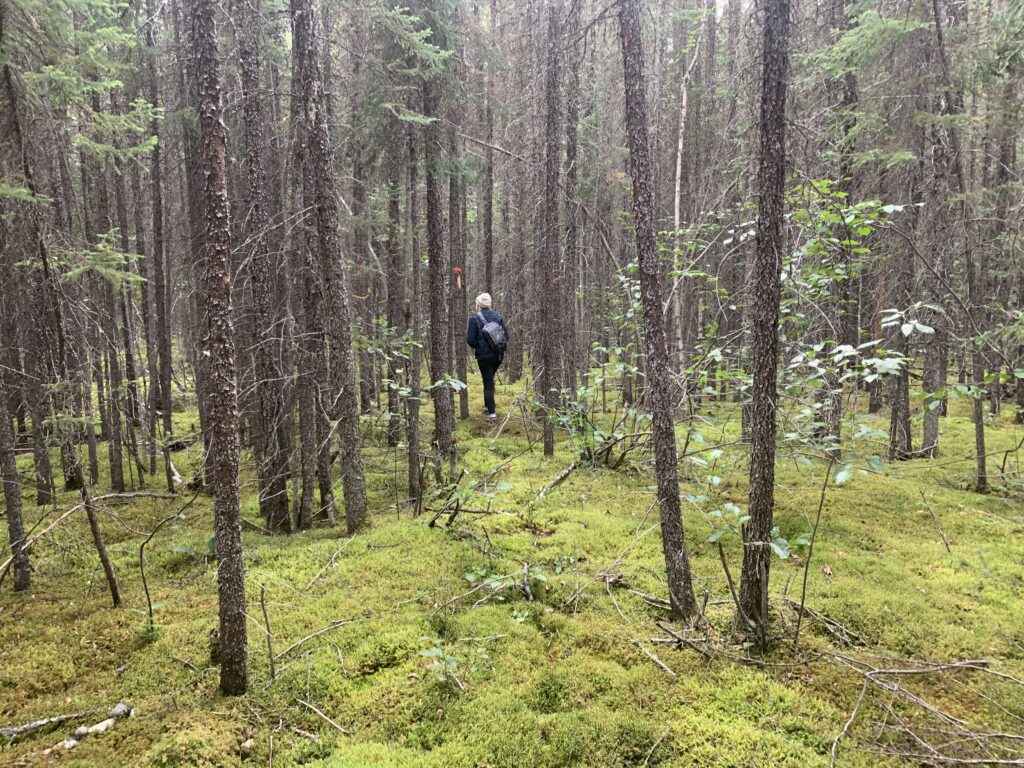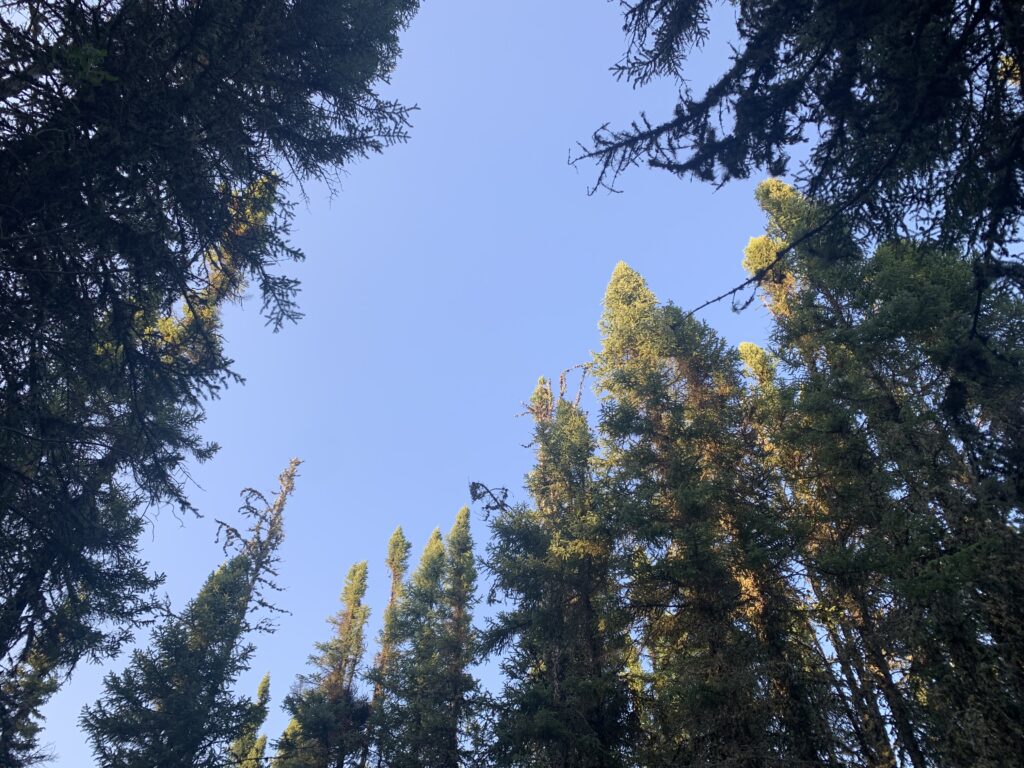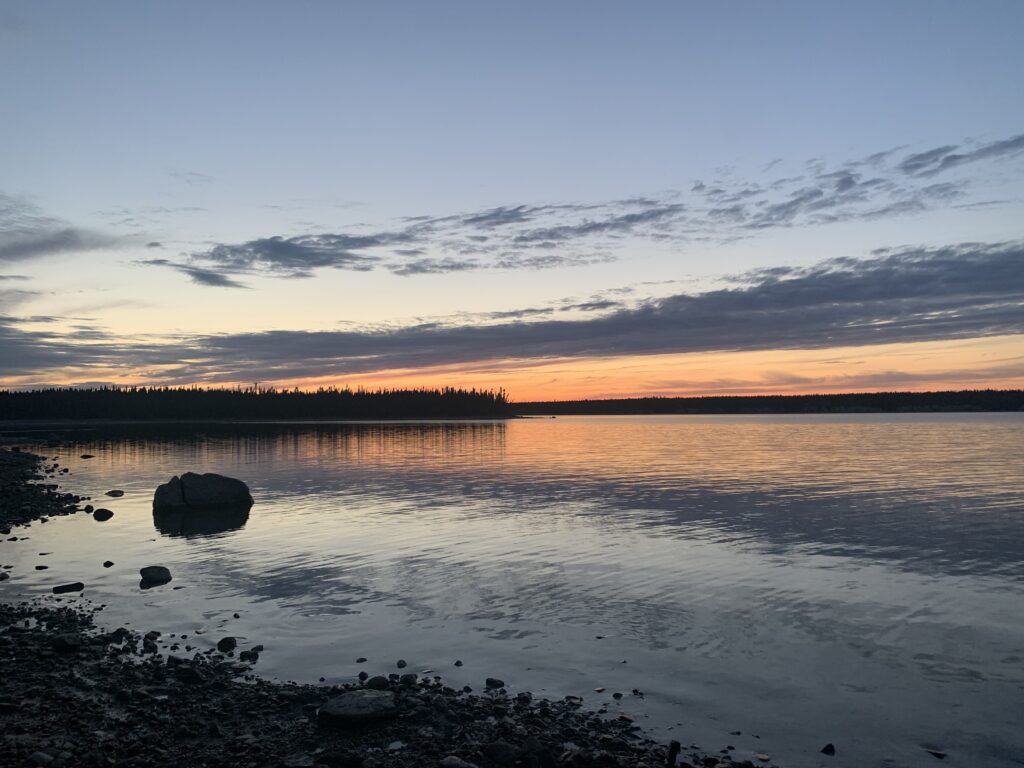
Welcome to our blog. We are a family from Manitoba, Canada that are rediscovering our connection to nature and helping others to do the same through our experiences, our stories, and our products. Our content will be related to all of the experiences we have on our journey towards being better eco-citizens and explorers of the forests of Manitoba, and beyond.
Our first adventure happened to be a trip north to visit my aunt’s off-grid home. Her place is nestled along the Nelson River about 20 km’s from the Gillam Marina, and only accessible by boat. During our visit, we spent a lot of time walking on the island and exploring the abandoned cabins. It was incredibly relaxing. It got me thinking about forest bathing and its benefits – and this is what today’s blog is about! So what is shinrin-yoku?

The term emerged in Japan in the 1980s as a physiological and psychological exercise called shinrin-yoku (“forest bathing” or “taking in the forest atmosphere”). The purpose was twofold: to offer an eco-antidote to tech-boom burnout and to inspire residents to reconnect with and protect the country’s forests.

What’s the science? Here is an excerpt from Yuko Tsunetsugu’s paper on forest bathing.
“The purpose of this study was to examine the physiological effects of Shinrin-yoku (taking in the atmosphere of the forest). The subjects were 12 male university students. On the first day of the experiments, six subjects went to the forest area, and the other six went to a city area as a control. On the second day, subjects went to the opposite areas as a cross-check. In the afternoon, they were seated on chairs watching the landscapes of their given area for 15 min. Heart rate variability (HRV), salivary cortisol and pulse rate were measured as physiological indices in the morning and in the evening at the place of accommodation, before and after watching the landscapes in the field areas. The high-frequency power of HRV of subjects in the forest area was significantly higher than that of subjects in the city area. The pulse rate of subjects in the forest area was significantly lower than that of subjects in the city area. The salivary cortisol concentration of the subjects in the forest area was significantly lower than that of subjects in the city area. The results of physiological measurements show that Shinrin-yoku was an effective form of relaxation.”
Park BJ;Tsunetsugu Y;Kasetani T;Kagawa T;Miyazaki Y; “The Physiological Effects of Shinrin-Yoku (Taking in the Forest Atmosphere or Forest Bathing): Evidence from Field Experiments in 24 Forests across Japan.” Environmental Health and Preventive Medicine, U.S. National Library of Medicine, https://pubmed.ncbi.nlm.nih.gov/19568835/.
Now, aside from the fact that there is scientific data to back this. I have to say that this is an incredibly subjective experience. Each one of us connects with the forest in a different way. For me, at this time, I am learning to listen more. To actively listen and to hear the movements around me. To calm my mind for the moment and to experience the sound of the present.
For me, forest bathing gives me a moment to breathe.

Join our mailing list to follow us on harvests and adventures!